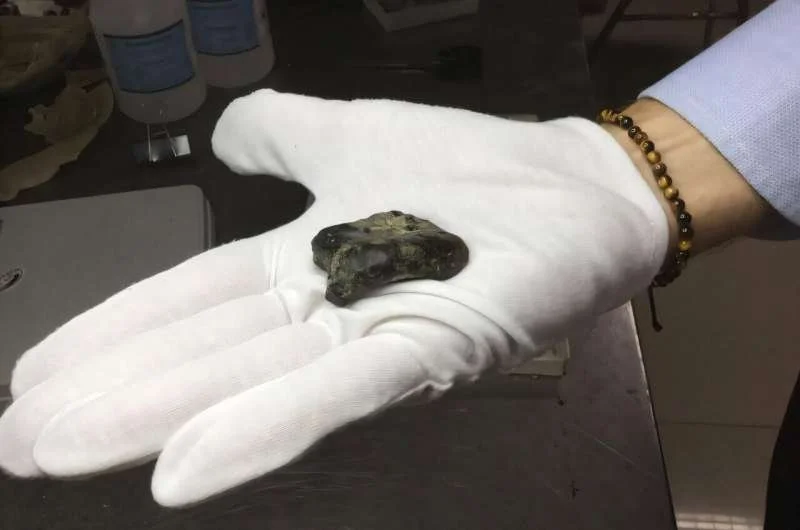The Tomb of Atreus, often referred to as the Treasury of Atreus or Agamemnon's Tomb, stands as a testament to Mycenaean architectural ingenuity. Located at the archaeological site of Mycenae, Greece, this tholos, or beehive tomb, is renowned for its exquisite craftsmanship and intricate details. Yet, for all its glory within its home nation, fragments of its facade are found scattered across museums in Europe. The dispersion of these fragments tells a story of colonialism, historical intrigue, and the ongoing debate over cultural heritage and repatriation.
Graphic reconstruction of the stone decoration of the facade indicating the suggested position of the fragments of the National Archaeological Museum of Athens (study by Maria Kontaki).
1. National Archaeological Museum of Athens, Greece
The National Archaeological Museum of Athens, being Greece's principal archaeological museum, rightfully possesses a significant portion of the Tomb's fragments. The museum's collection not only presents the facade fragments in their historical context but also tells the story of a nation's journey through time. Here, visitors can see the pieces in proximity to other Mycenaean treasures, painting a fuller picture of the era.
Reconstruction of one of the pillars from the façade, in the National Archaeological Museum of Athens.
2. The British Museum, London
The British Empire's colonial history and its penchant for collecting treasures from its colonies and beyond resulted in the British Museum becoming one of the world's most comprehensive museums. Among its vast collection are fragments from the Tomb of Atreus. Their presence here speaks to the era of British archaeology and exploration in the 19th century, when artifacts from around the world were brought to London, often without the explicit consent of their home nations.
British Museum: Parts of two carved green marble half-columns that flanked the tomb at the Treasury of Atreus.
3. The Karlsruhe Museum, Germany
The Karlsruhe Museum in Germany, although lesser-known on the global stage compared to some other institutions, also houses fragments of the Tomb's facade. The German interest in archaeology and classical studies during the late 19th and early 20th centuries led to a myriad of excavations and acquisitions, including those from Mycenae.
4. Archaeological Collections in Munich and Berlin
Similarly, in Munich and Berlin, the storied history of German archaeology is reflected in their respective archaeological collections. Both cities possess fragments from the Tomb of Atreus, showcasing them alongside other ancient world artifacts and creating a narrative of interconnected ancient civilizations.
The Broader Implications of Fragmented Cultural Heritage
The fragmented dispersion of the Tomb of Atreus’s facade serves as a microcosm of a larger issue: the global distribution of cultural heritage artifacts. It raises pressing questions: Who truly 'owns' history? Where should these artifacts reside?
Such phenomena have broad and significant implications not just for the countries of origin and the museums that house them but also for global understandings of history, culture, and ethics.
Identity and National Pride:
Artifacts are often tied to a nation's identity and historical narrative. When key artifacts are located outside their country of origin, it can feel as though a piece of the nation's soul and heritage is missing. For many, the return of these pieces is essential to complete the story of their ancestors, to connect with their past, and to bolster national pride.
Colonial Legacies:
The dispersion of cultural treasures is often intrinsically linked with colonial histories. Many artifacts found their way to European and American museums during the age of colonialism and imperialism. This movement wasn’t just a mere exchange; it was often done without consent or under duress, making the artifacts symbolic of a painful era of exploitation.
Economic Implications:
Cultural treasures attract tourism. Countries that have their artifacts returned can see an uptick in tourism revenue as visitors flock to see iconic pieces in their original or intended setting. Conversely, international museums, which have built reputations around their extensive collections, might experience a decline in visitors if significant artifacts are repatriated.
Ethical and Moral Questions:
The debate about repatriating artifacts goes beyond legal ownership to deeper ethical questions. Even if a museum acquires an artifact legally, is it morally right for them to keep it if it was originally taken without consent? Should historical wrongs be corrected in the present?
Conservation and Research:
Some argue that certain international museums have better resources and expertise to conserve and research artifacts. They contend that these institutions can ensure the preservation of the artifact for future generations and further academic understanding. However, with advancements in technology and growing expertise, many nations are now fully equipped to handle and care for their own cultural treasures.
Shared Global Heritage vs. National Ownership:
While some argue for the national ownership and repatriation of artifacts, others see significant artifacts as part of a shared global heritage. They believe that such pieces should be accessible to as many people as possible, often in the context of other world artifacts, to promote a broader understanding of global histories and connections.
Legal Battles and Diplomacy:
The debate over artifact repatriation often leads to legal battles and diplomatic tensions between countries. Some countries have passed laws demanding the return of their artifacts, leading to negotiations and, at times, strained relations with the countries housing these artifacts.
The debate over repatriation has grown louder in recent years. Many nations have called for the return of their cultural and historical artifacts. In some cases, there have been successes, and in others, the discussions are ongoing.
The story of the Tomb of Atreus’s facade also sheds light on our shared human history. While these artifacts originated in Greece, their presence in museums across Europe denotes interconnectedness, a shared appreciation for ancient cultures, and the historical ties that bind different civilizations.
The divided fragments of the facade of the Tomb of Atreus, spread across Europe's museums, serve as a reminder of our shared human history, the complexities of cultural heritage, and the ongoing discussions about ownership and repatriation. As we move forward, it remains to be seen how these debates will reshape museum collections worldwide. For now, they stand as a testament to the Mycenaean civilization's grandeur and the ever-evolving narrative of global history.













